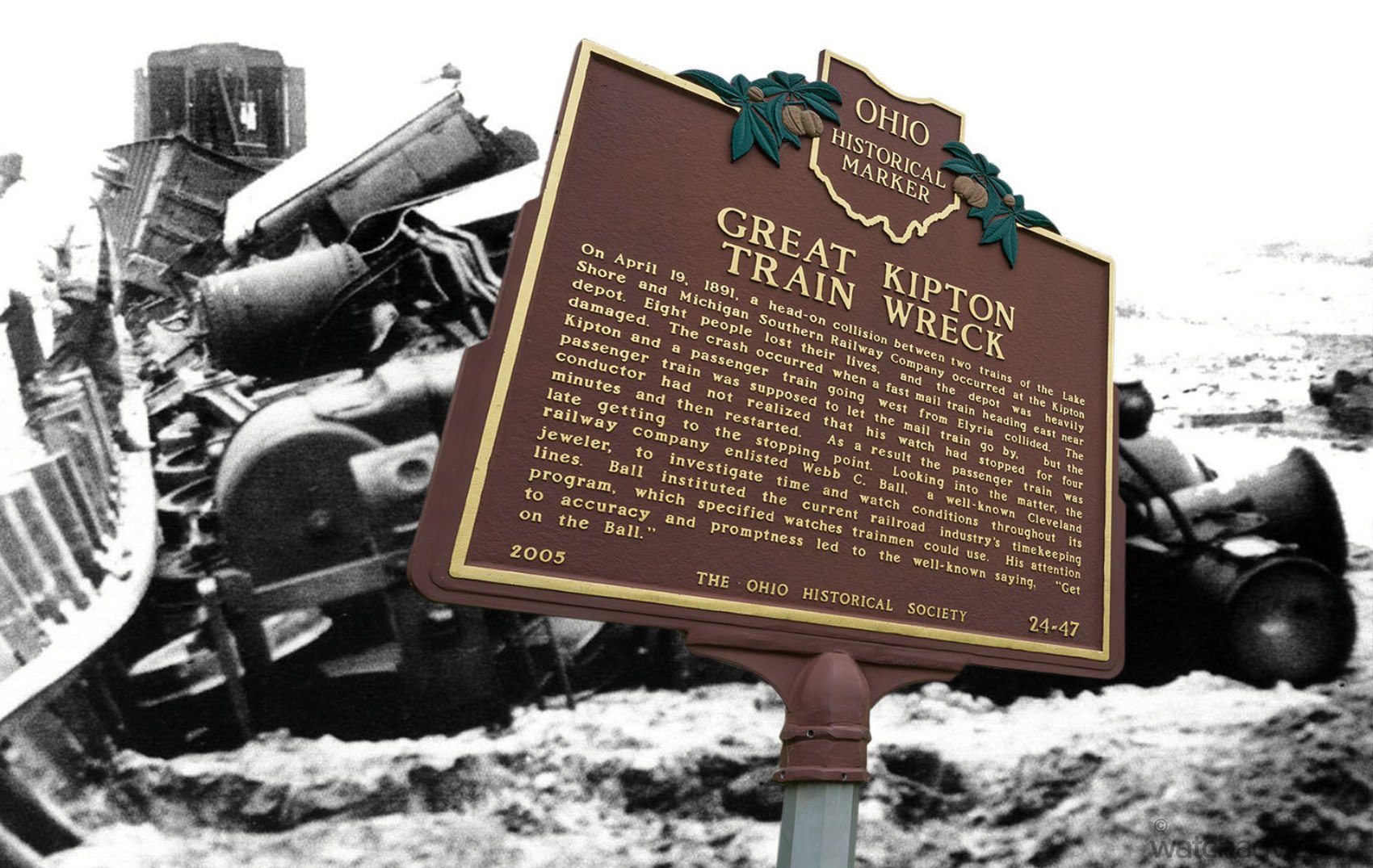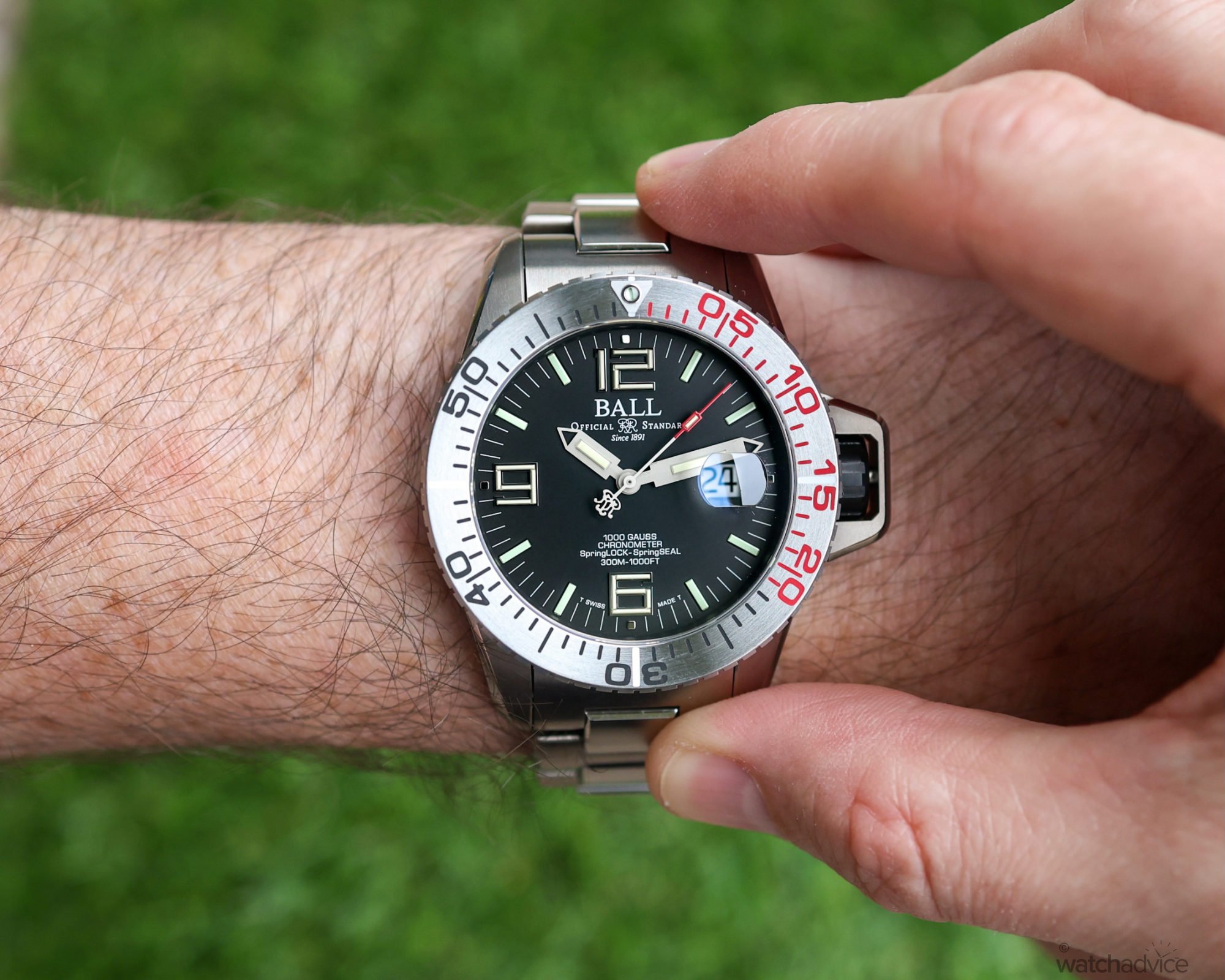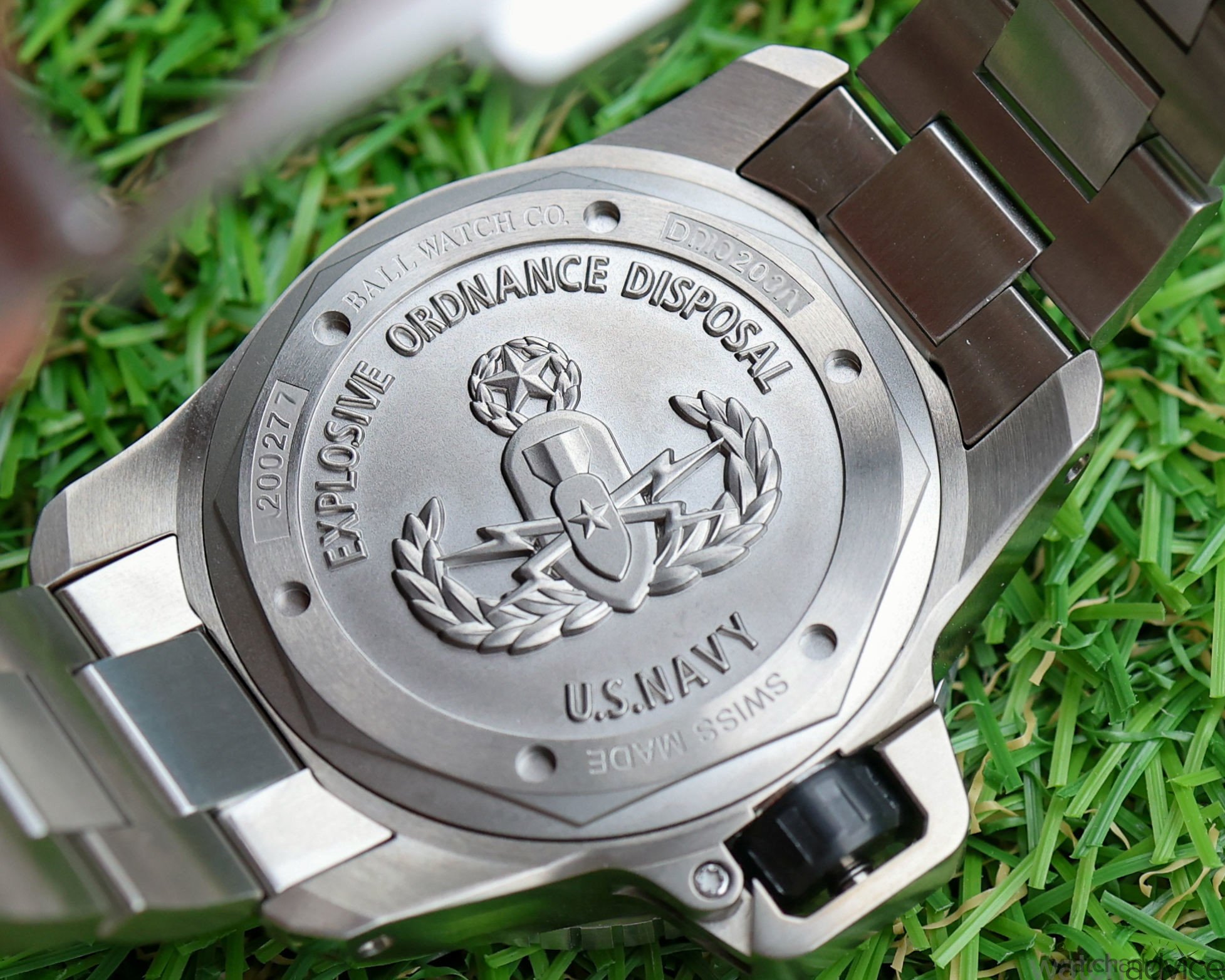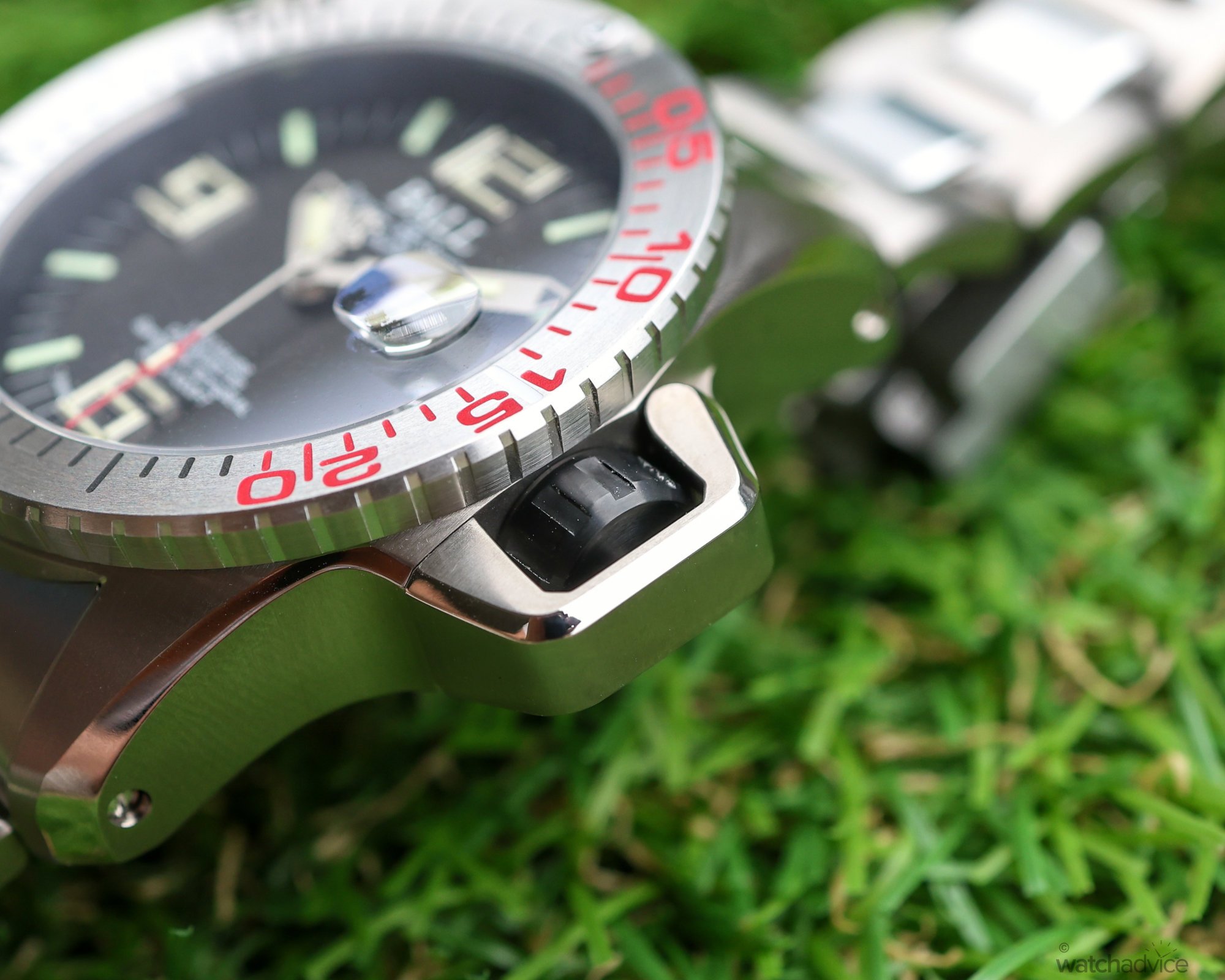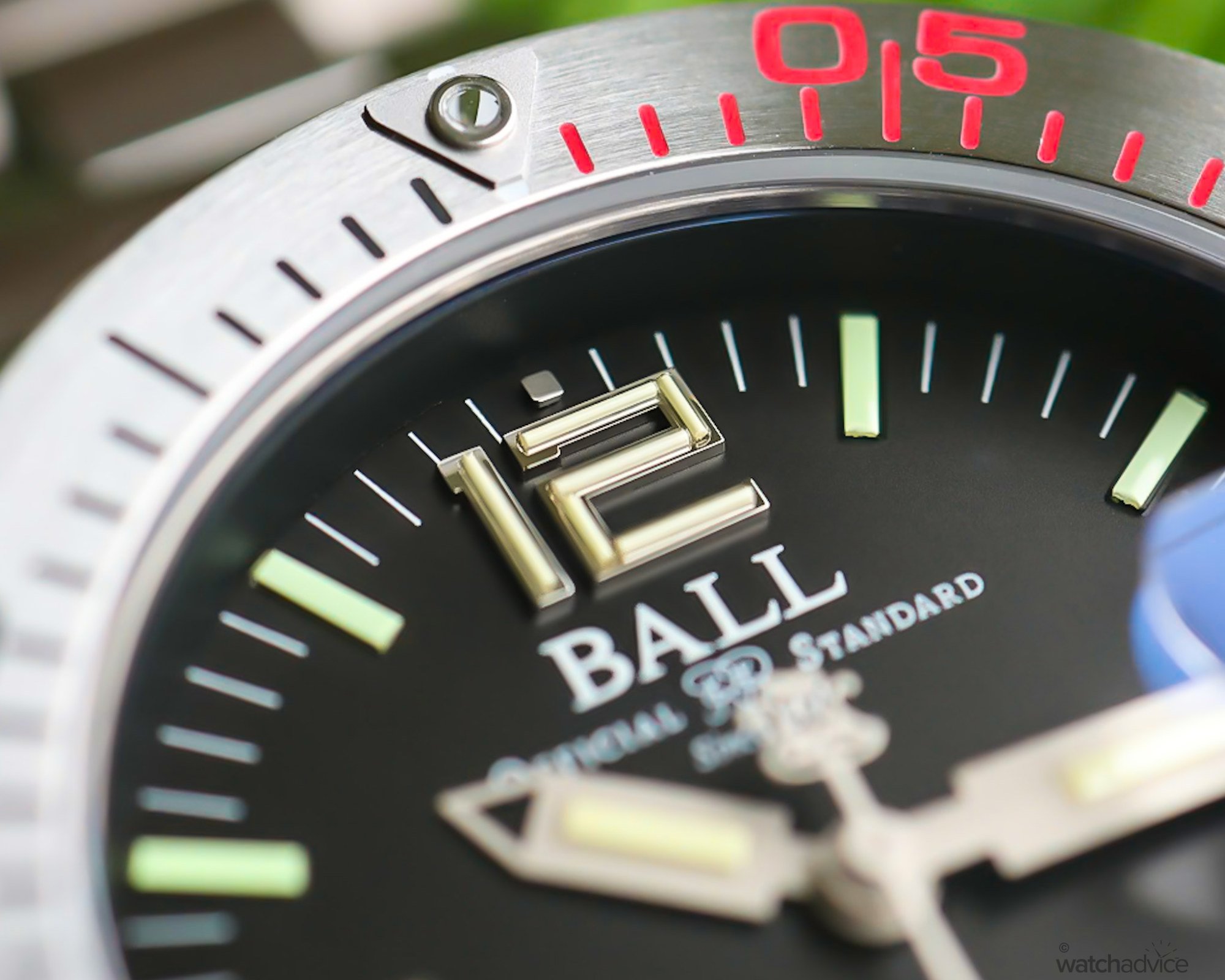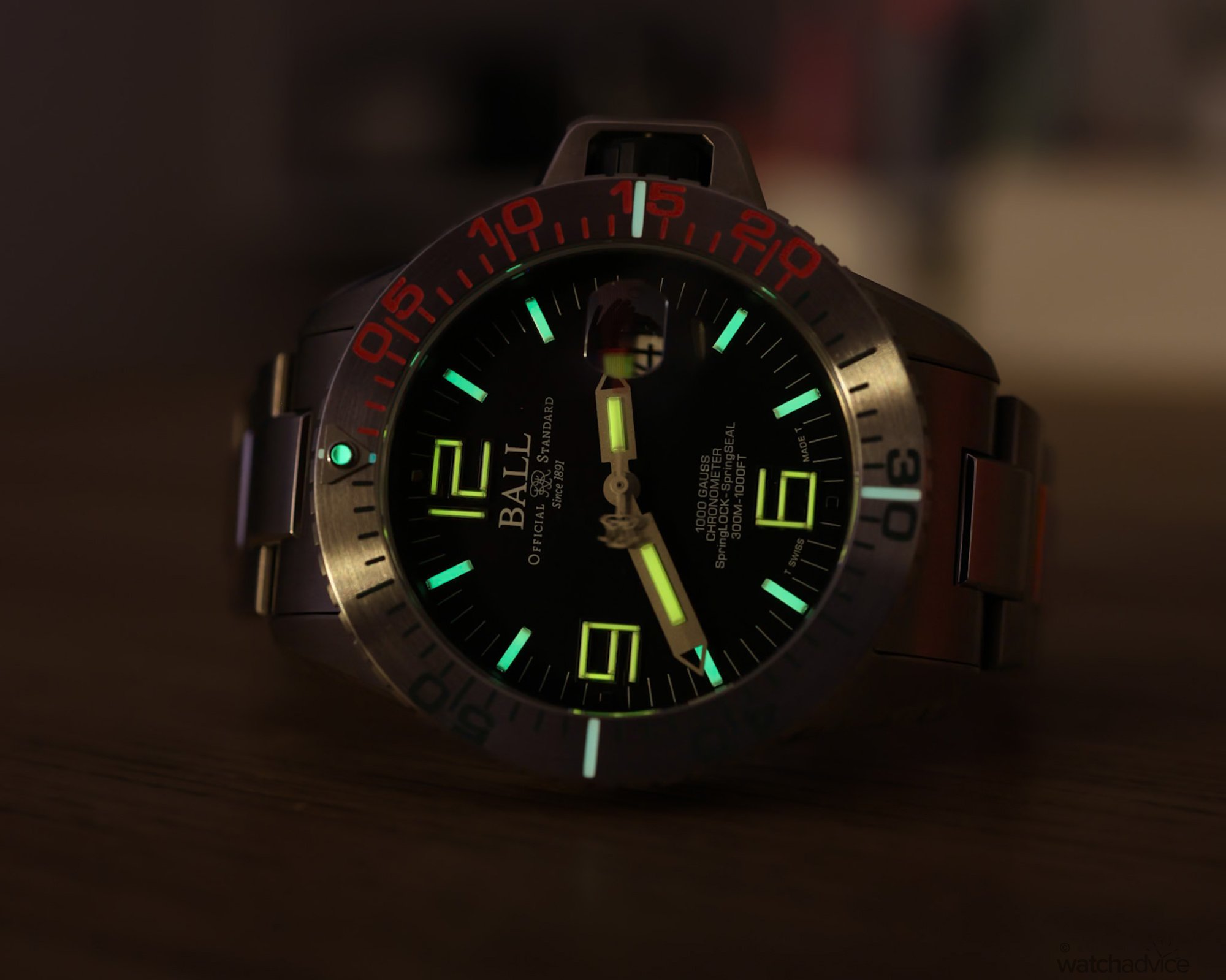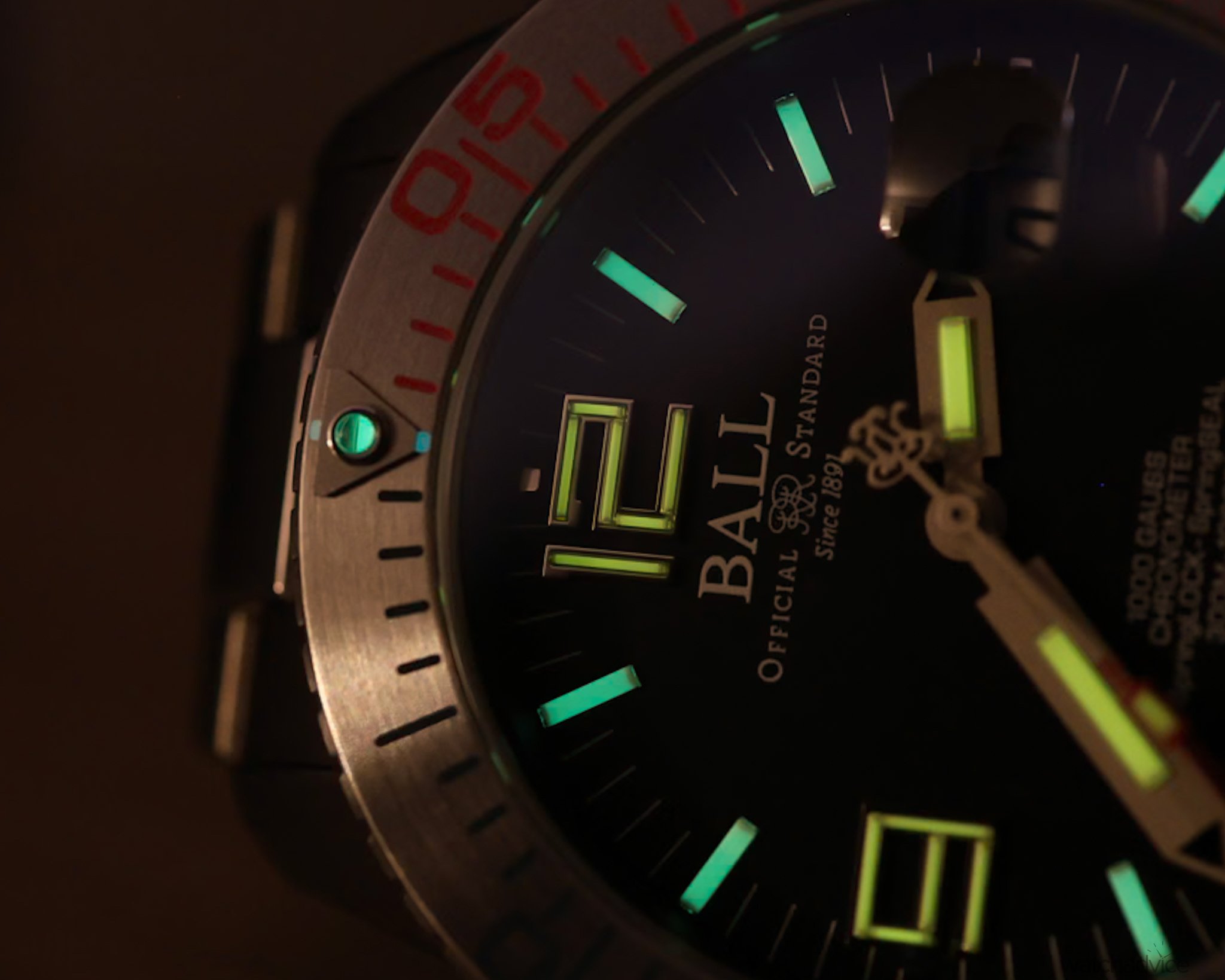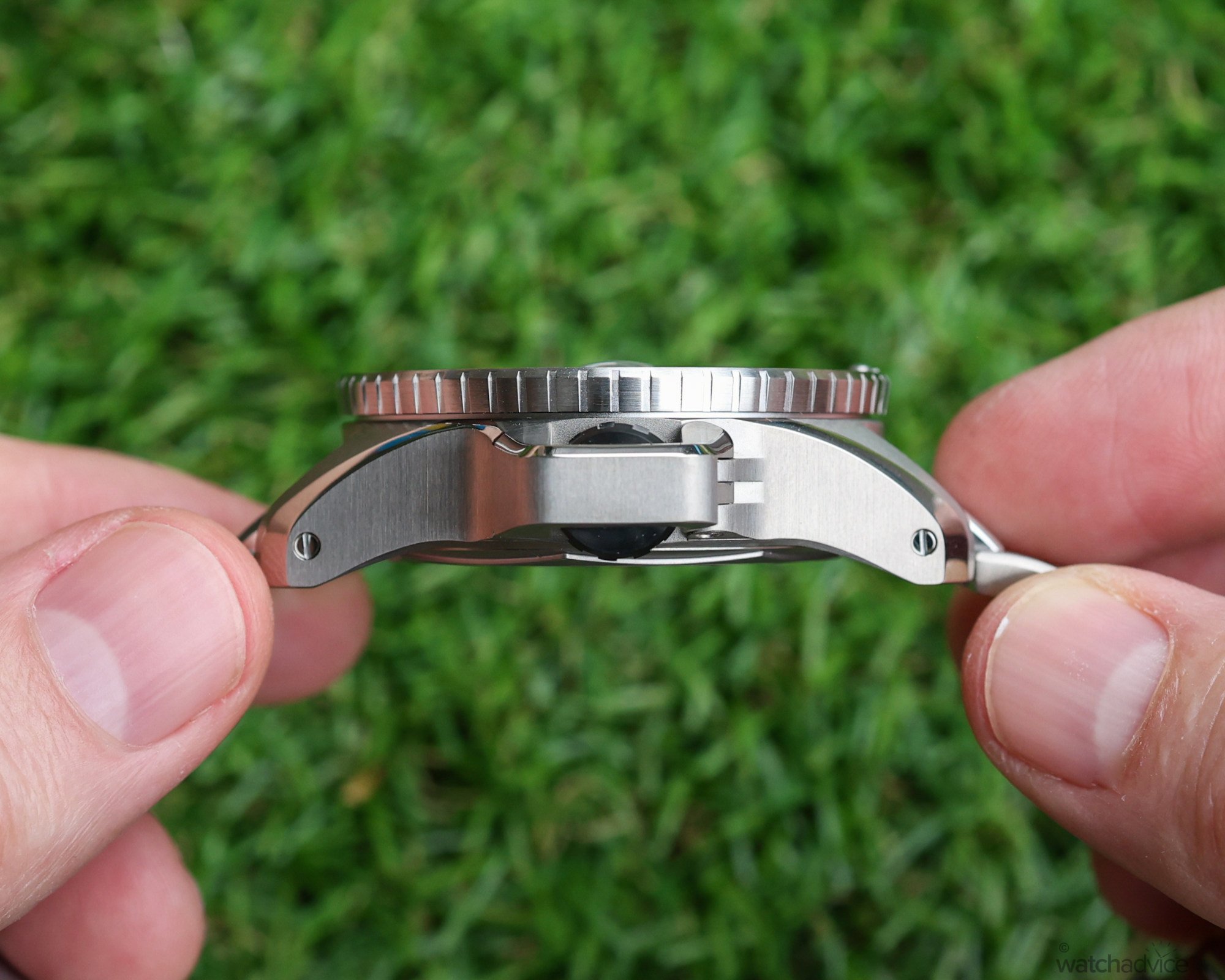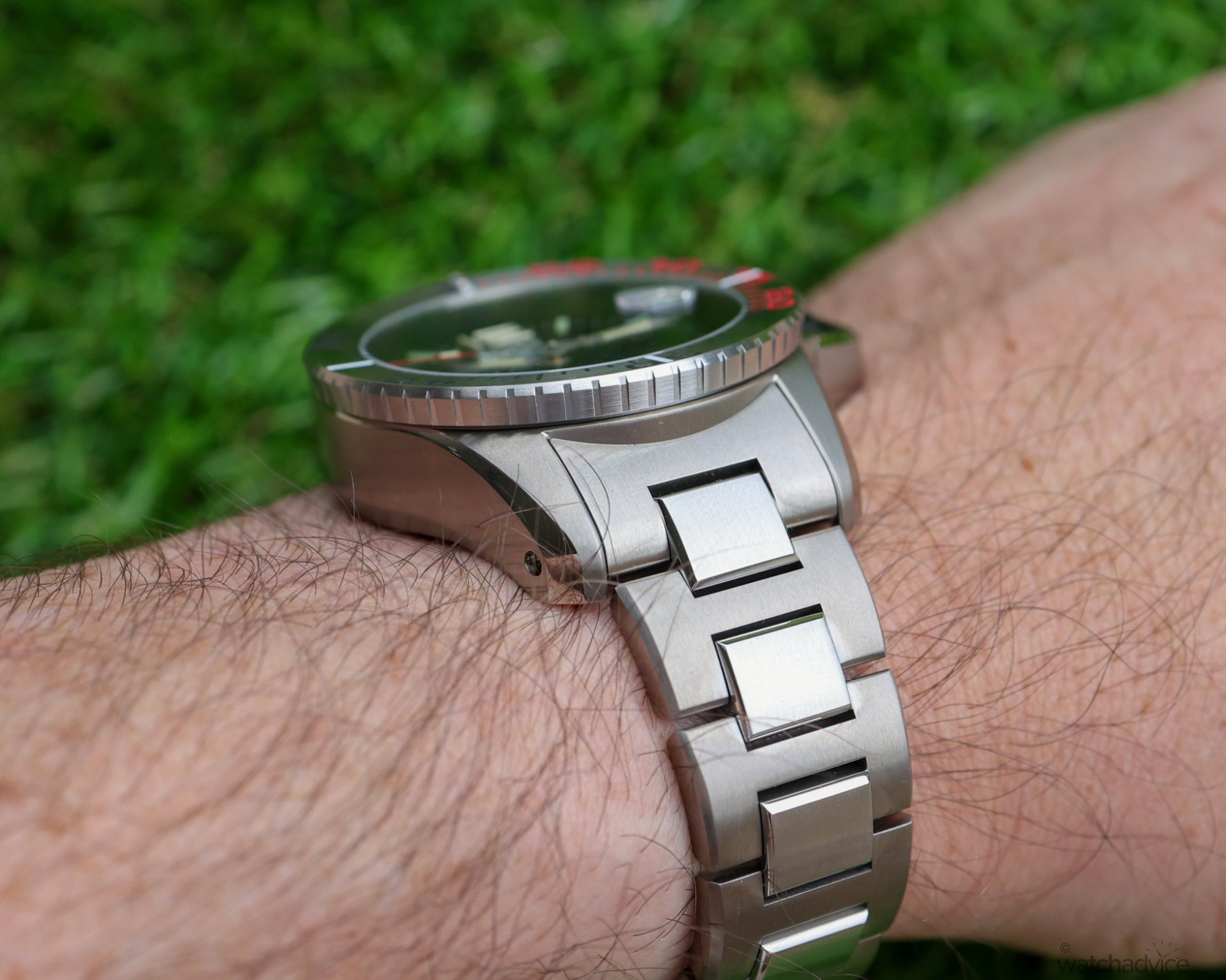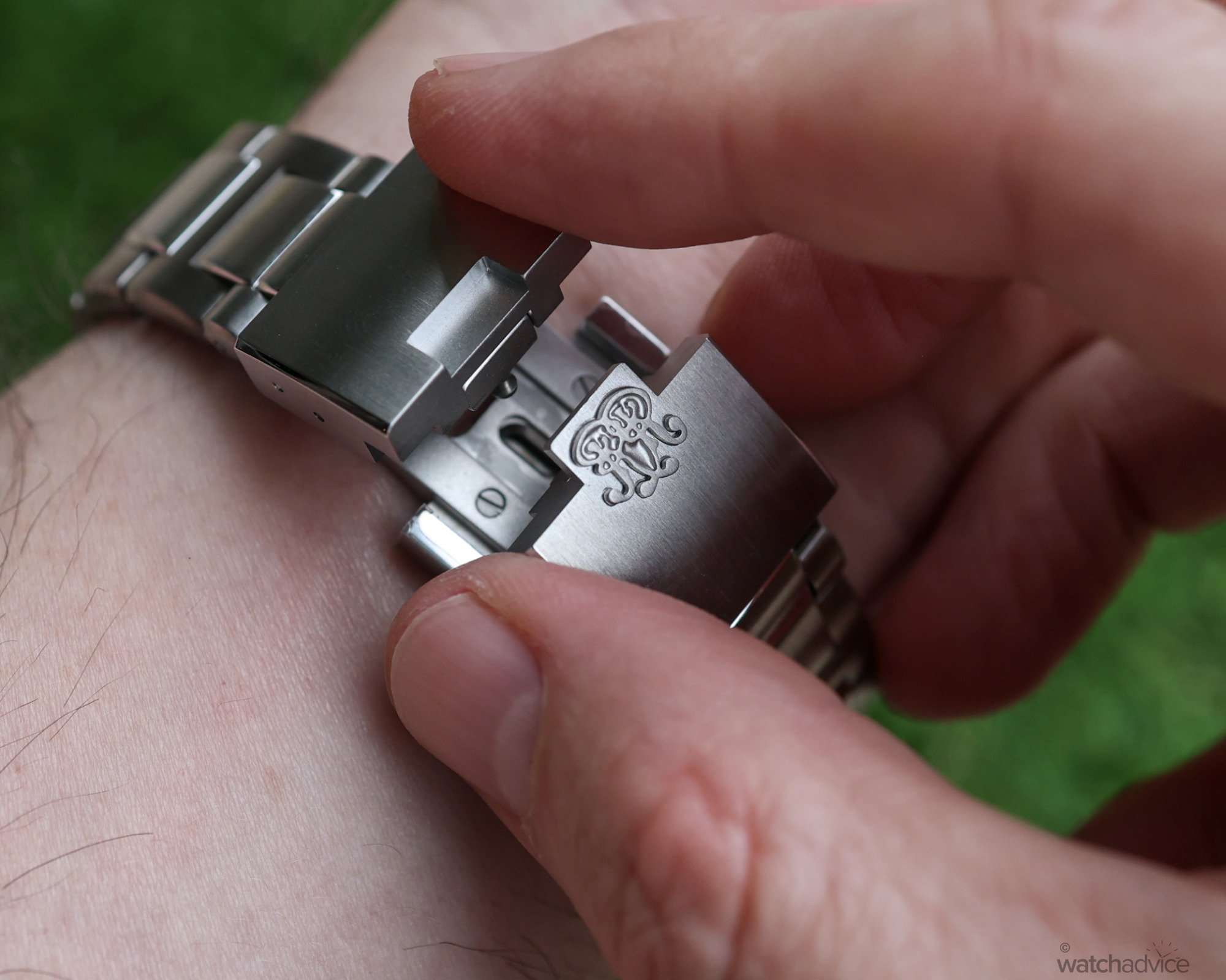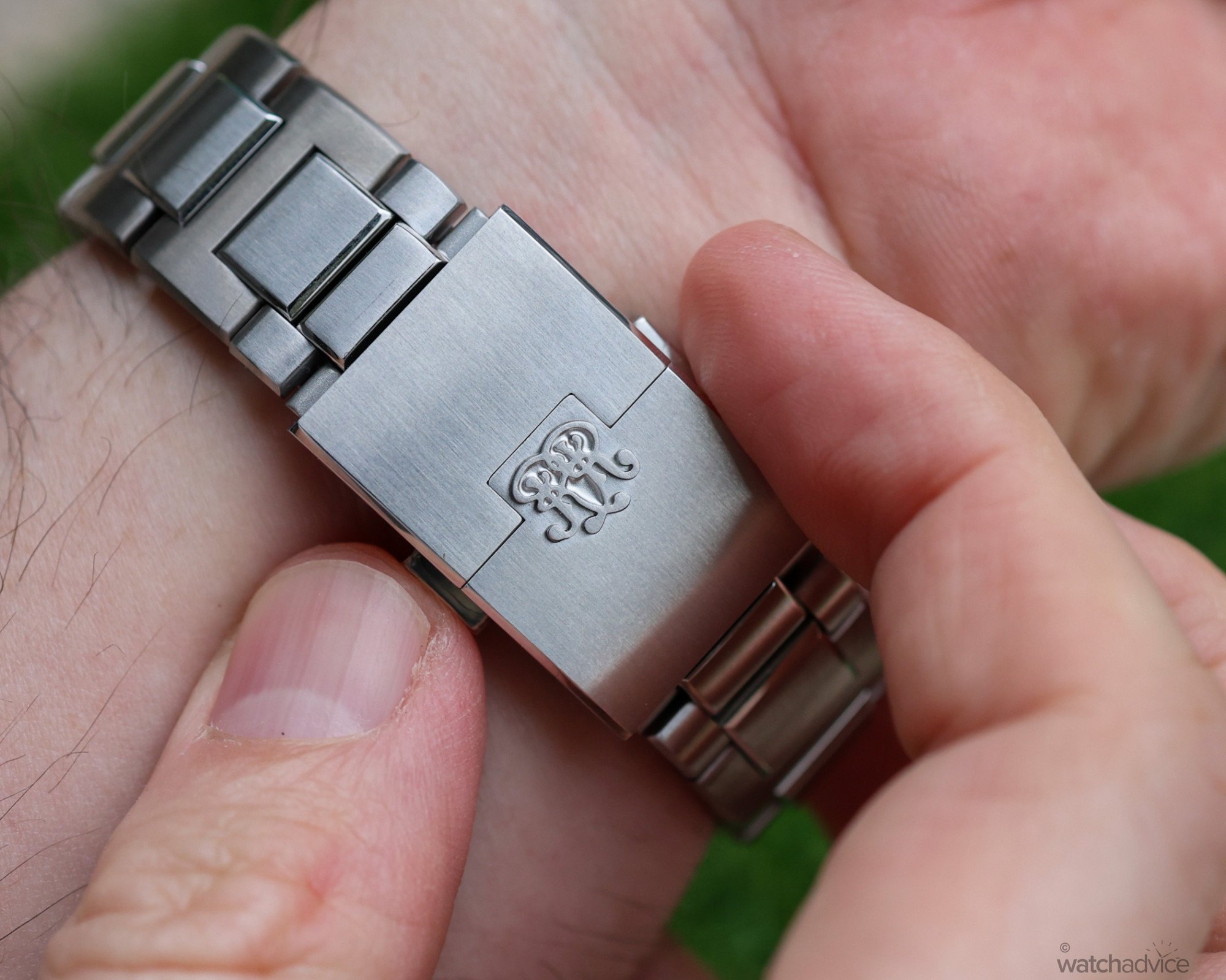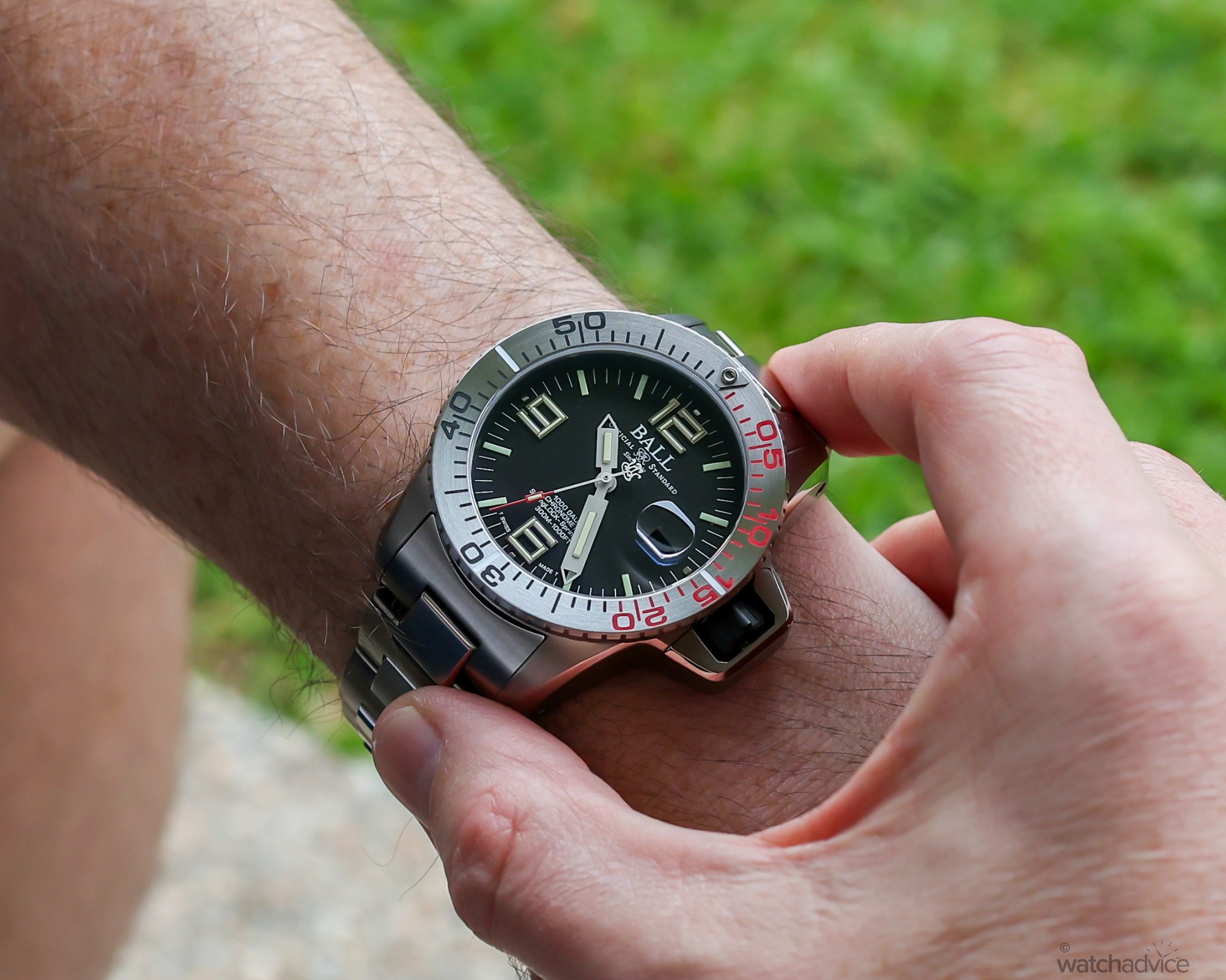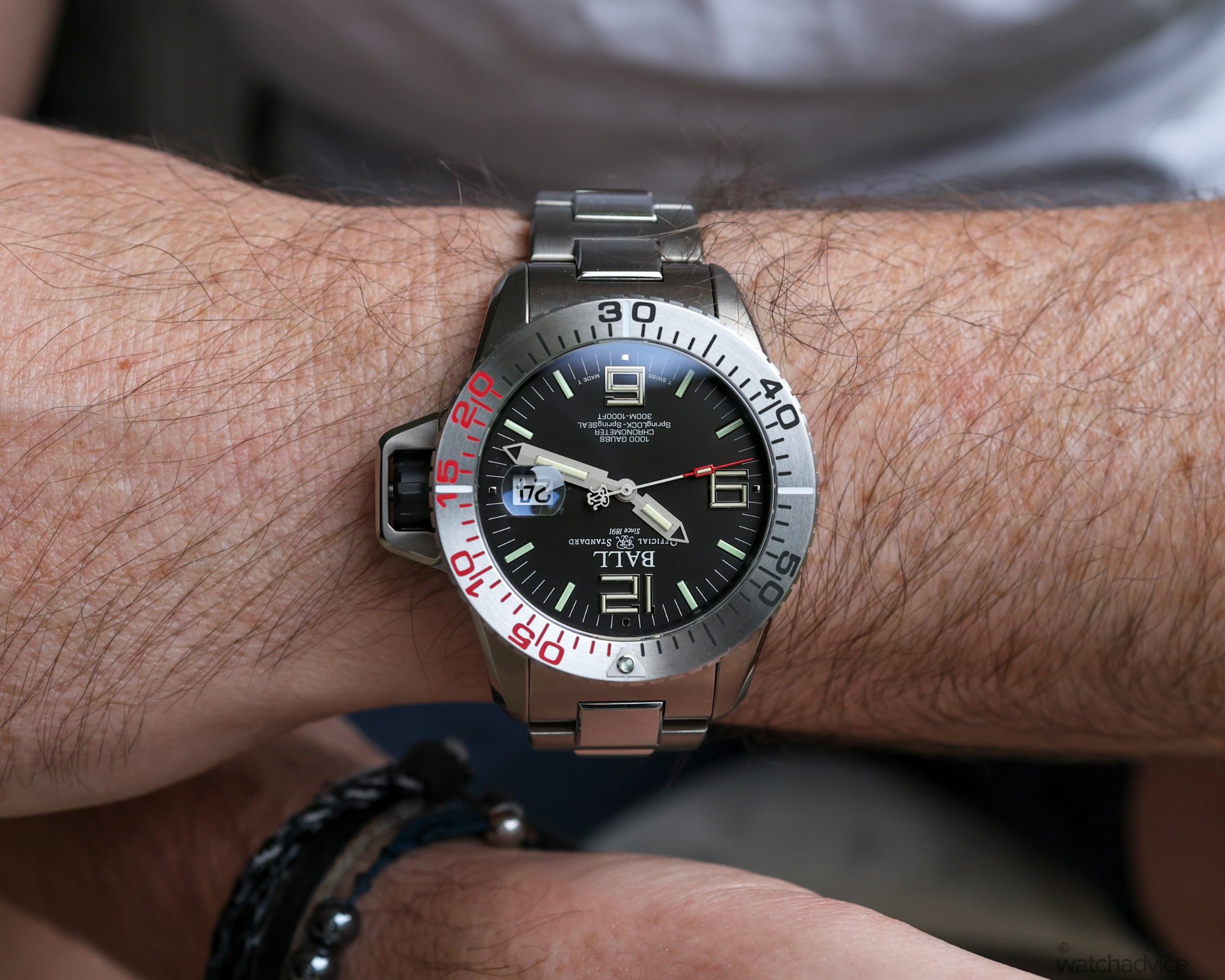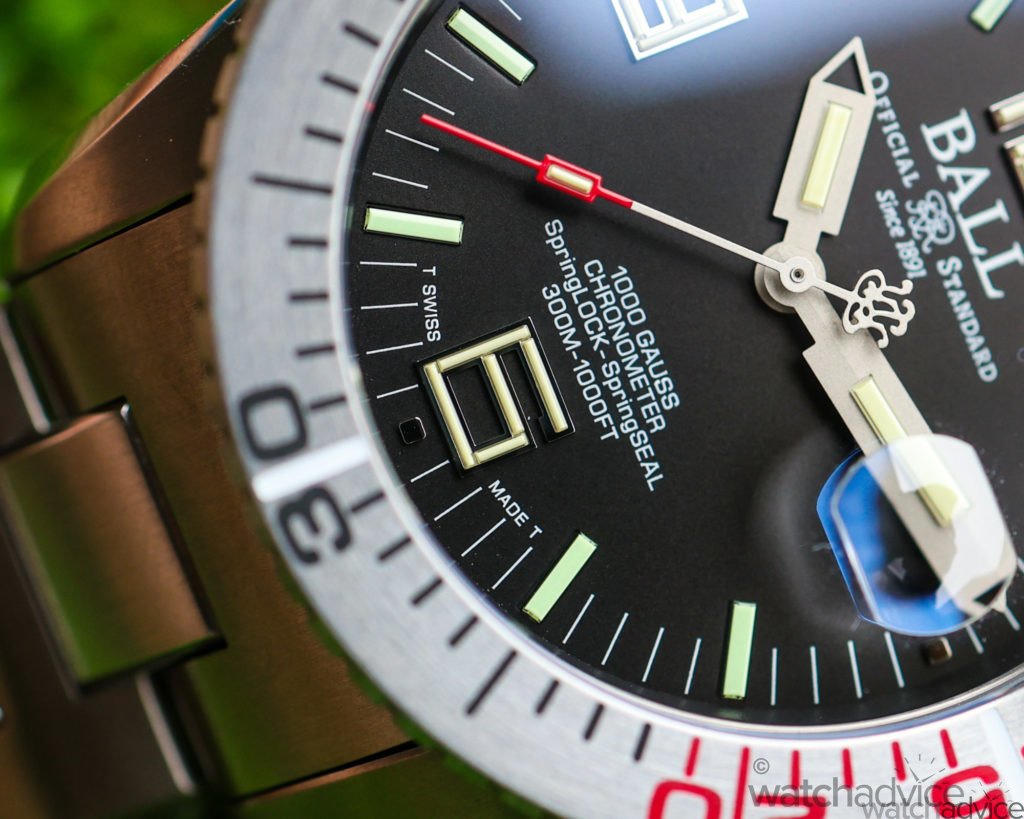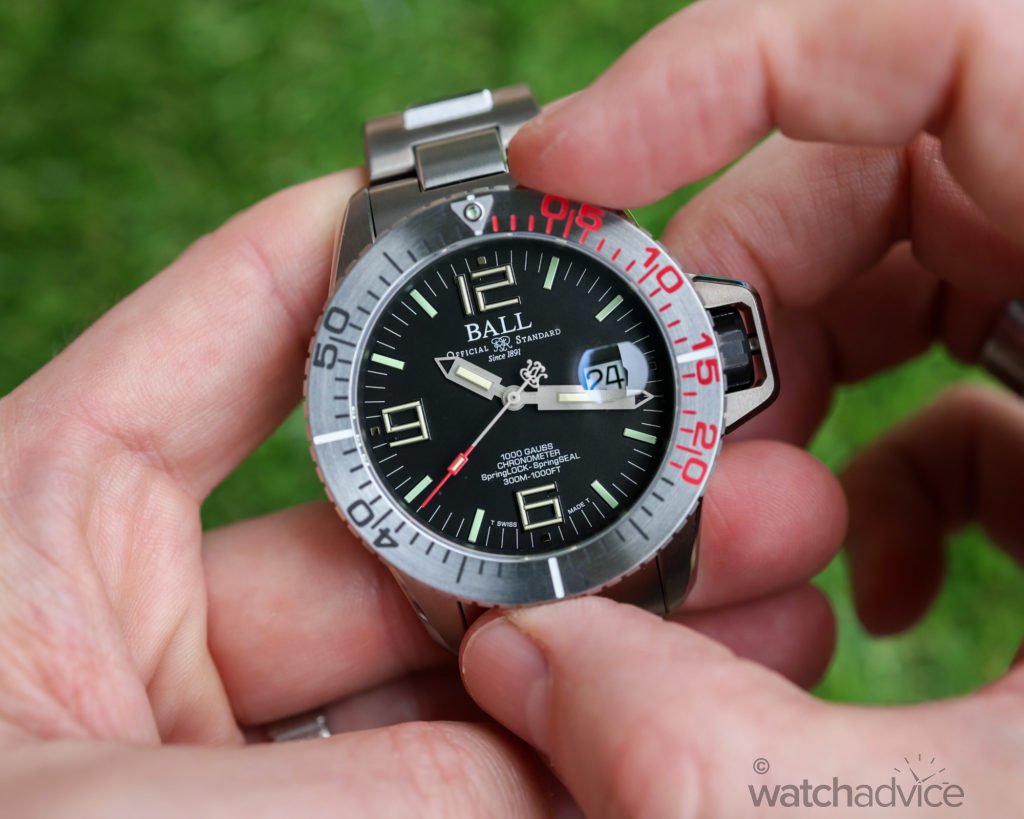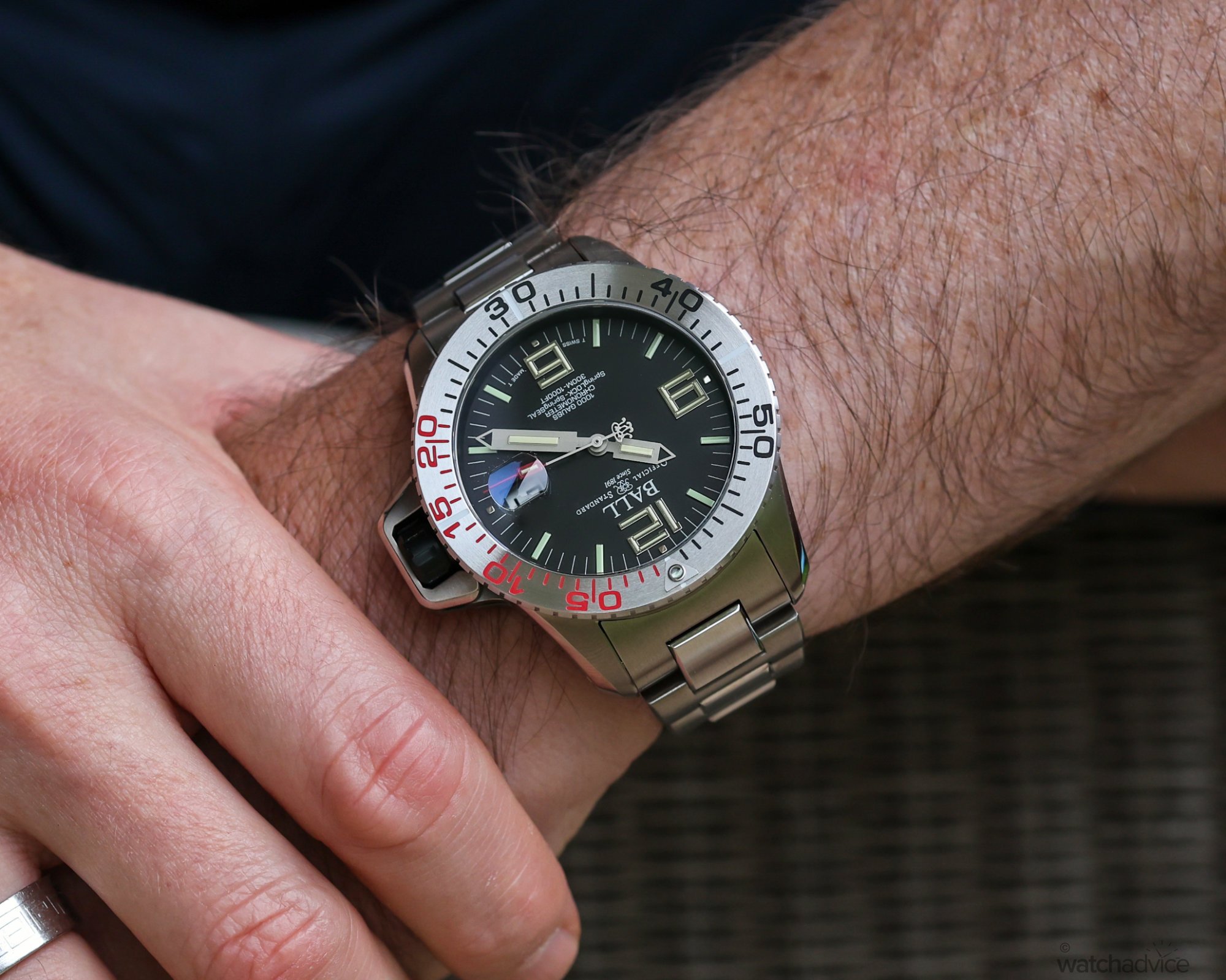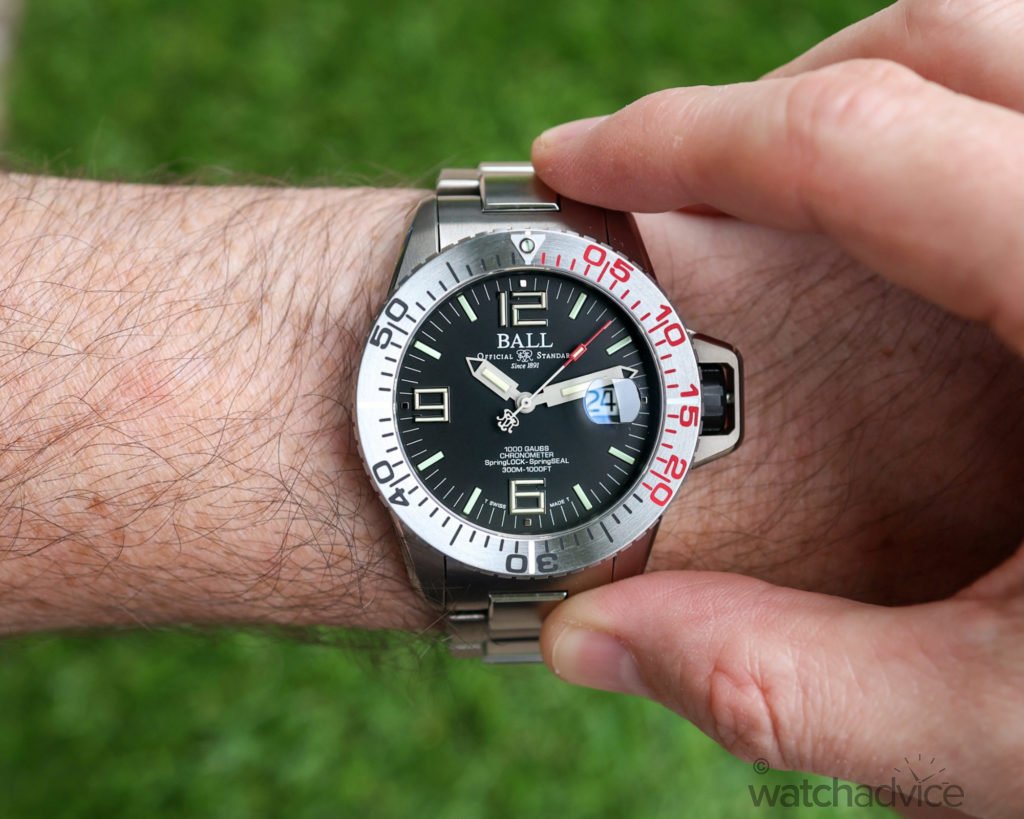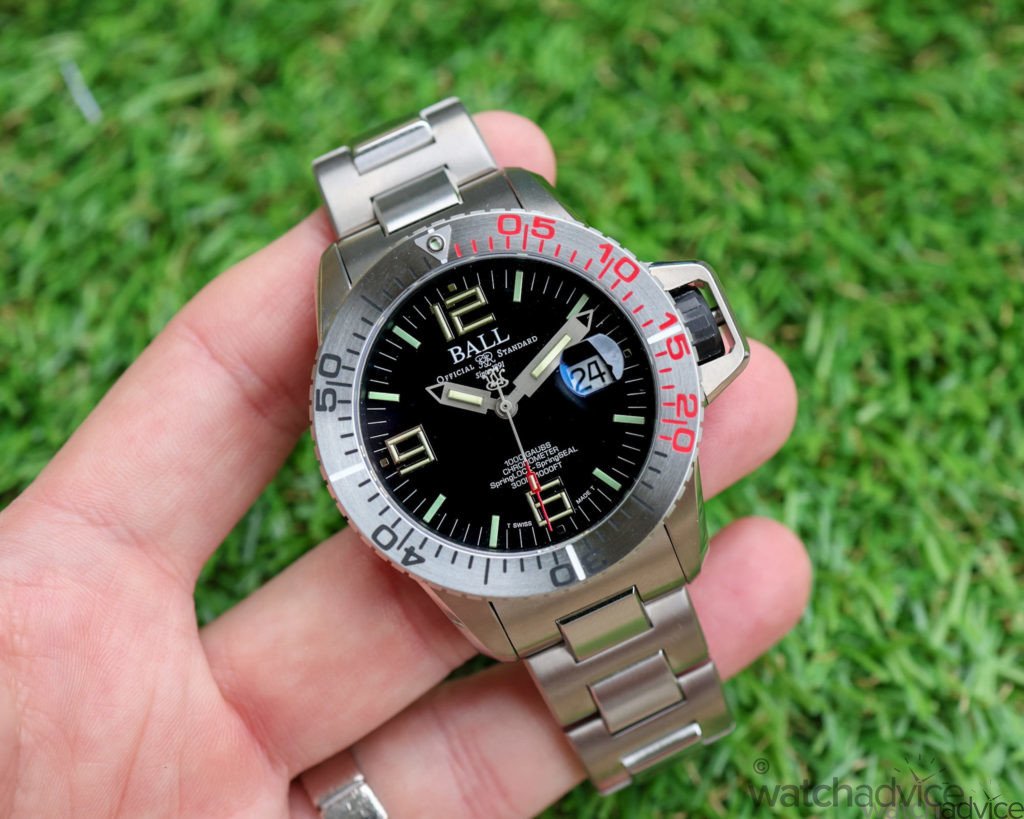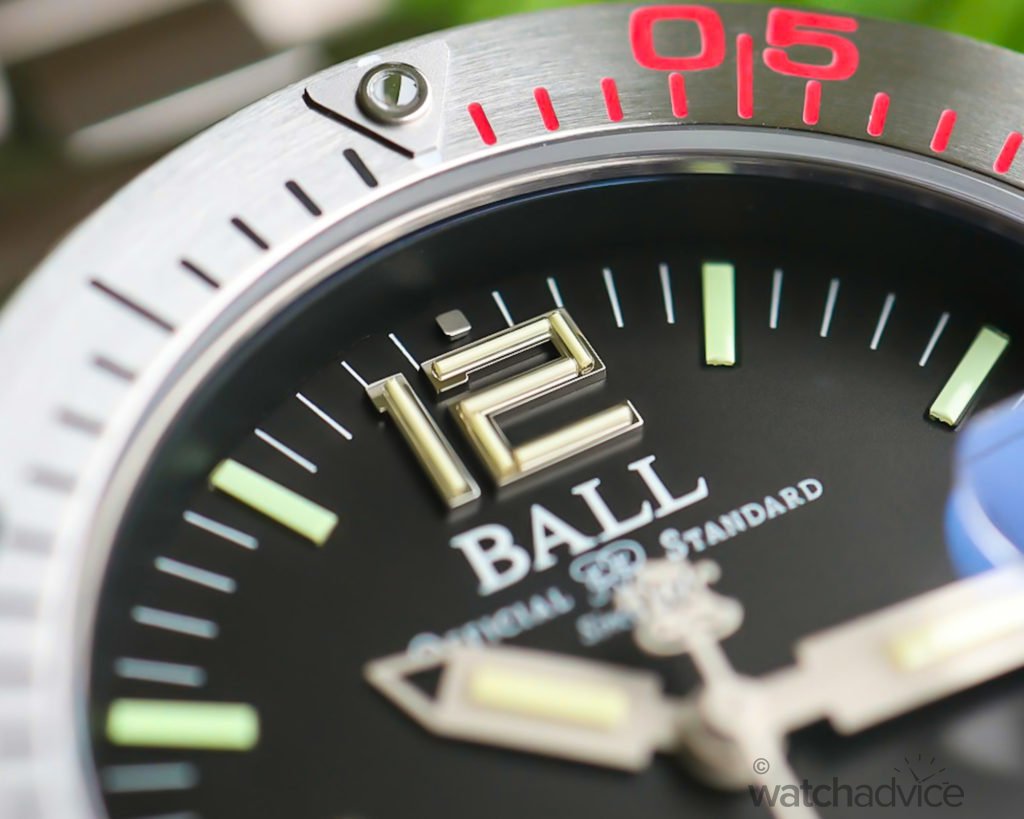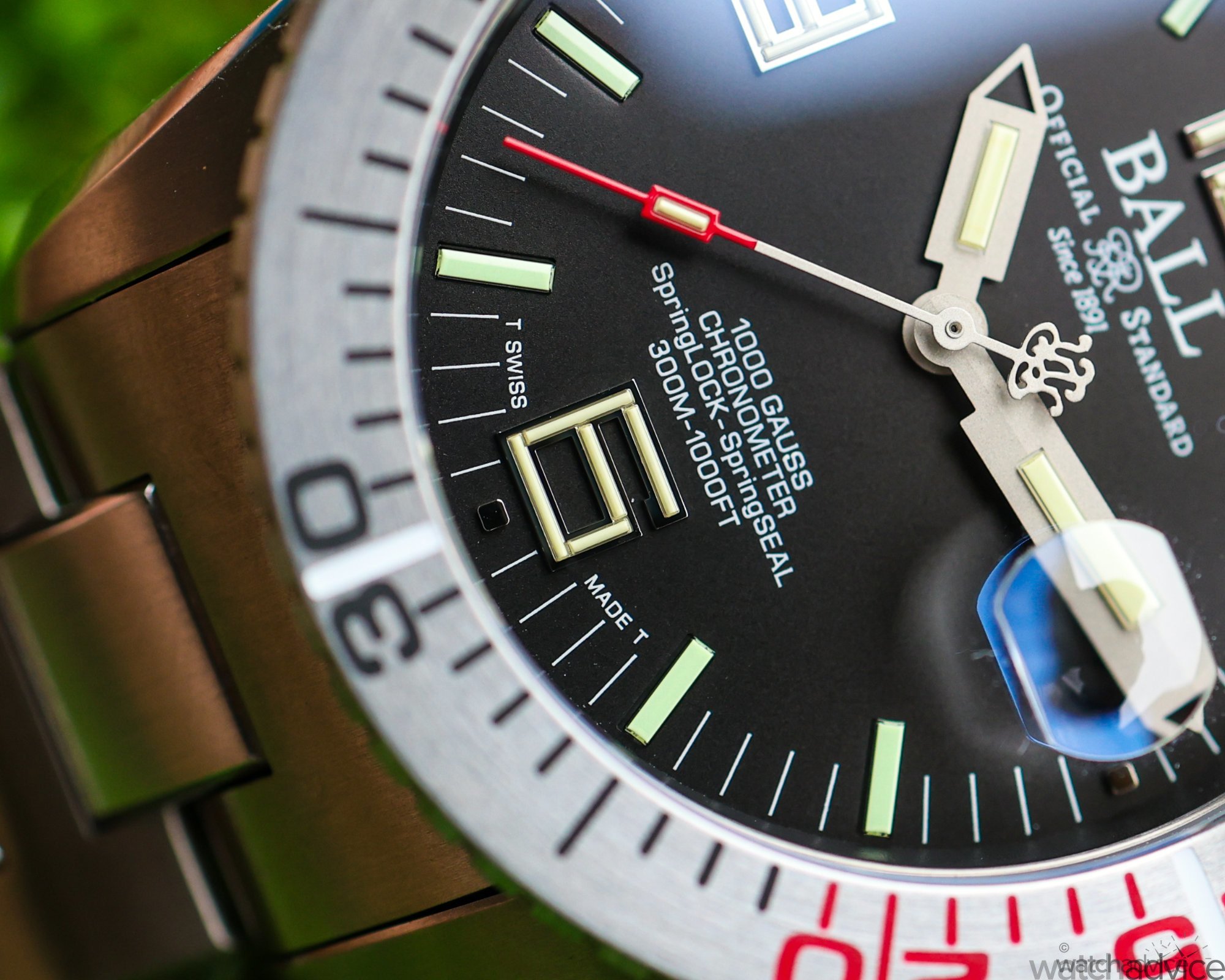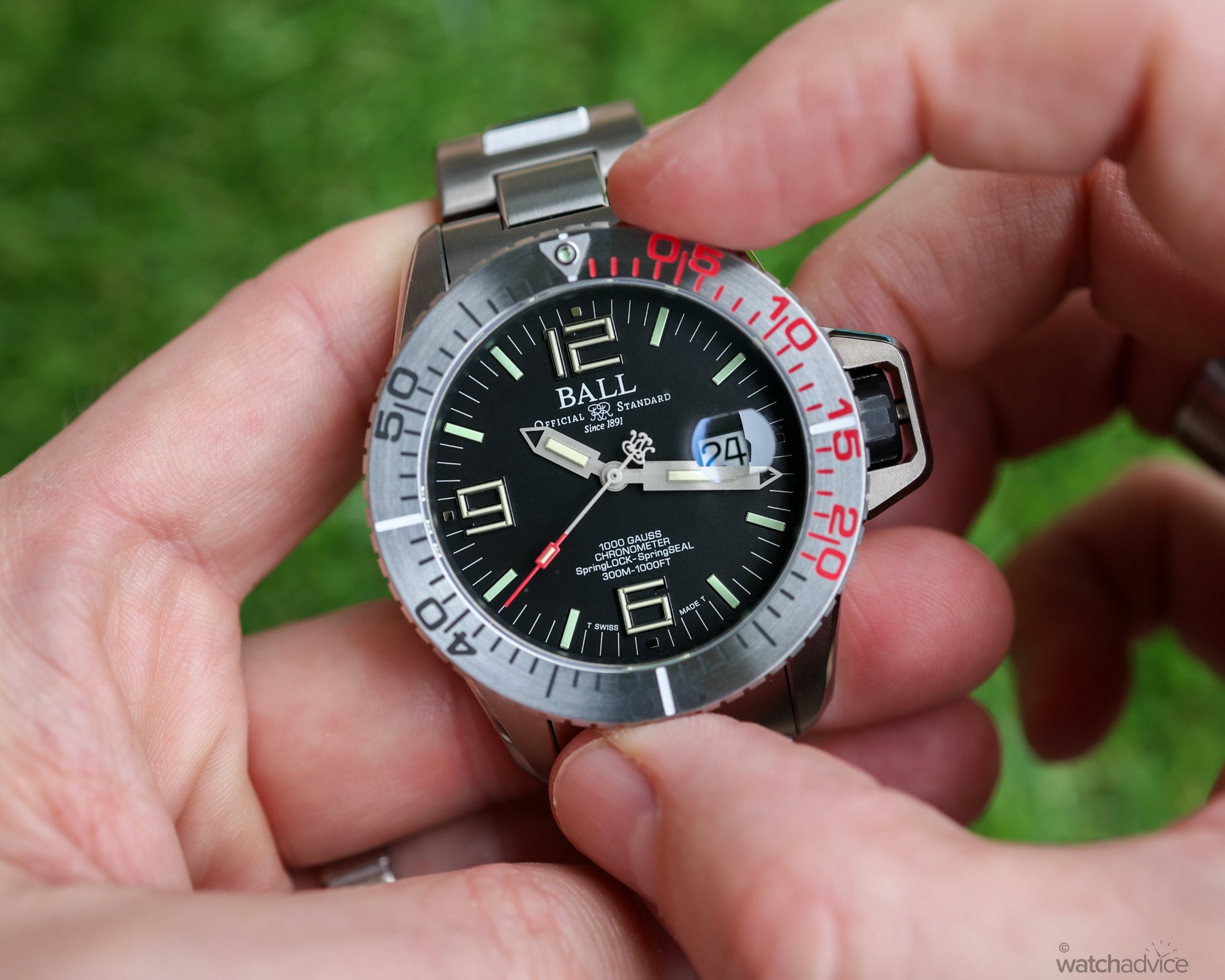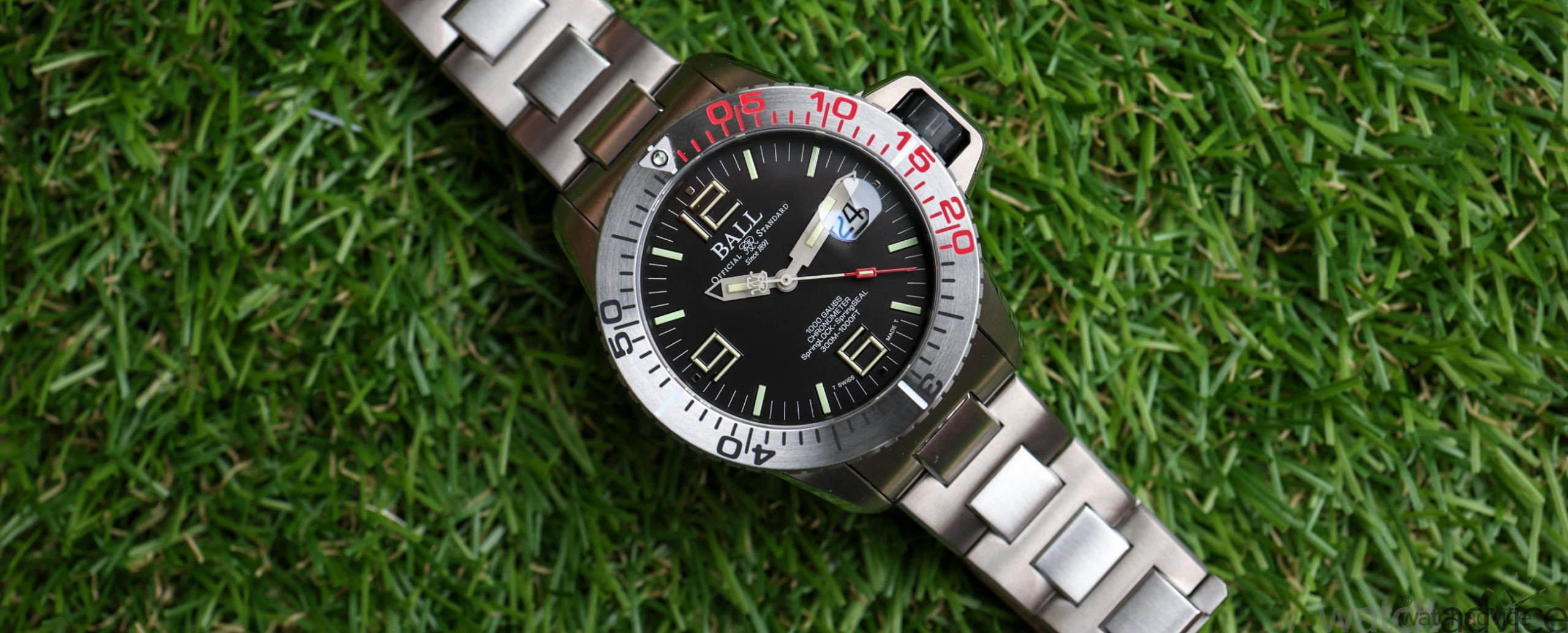We go hands on with the Ball Engineer Hydrocarbon EOD to see just how robust this tool watch really is!
What We Love
- Its “Bullet Proof” build
- The micro gas lights and lume
- Ingenious shock-resistant systems
What We Don’t
- The size as it wears larger than the specs suggest
- Mix of titanium and steel feels a little odd
- The clasp isn’t as comfortable and could be better designed
Overall Rating: 8/10
- Value for money: 8/10
- Wearability: 7/10
- Design: 8/10
- Build quality: 9/10
Ball is one of those brands that’s been around for a long while, since 1891 in fact, and probably doesn’t get as much credit as they deserve. Many brands are in the same boat unfortunately, but this is the world we live in. A big part of that is to do with marketing to be honest, and the rest is down to the watches, design, current trends, and culture. It all plays a part.
Ball is a brand that was born out of the American railroad era. Similar to other brands that got their start or came to prominence as a result, like Hamilton, Waltham, and others if I can draw that association. For those who aren’t familiar with this era in watchmaking, here’s a very quick history lesson.
Back in the late 1800’s and early 1900’s, the United States was going through its industrial revolution. A big part of that was the American railway – all industries relied on this to get supplies for manufacturing, agriculture, building etc from one coast to the other. And this meant that the trains had to run in time and like clockwork.
Prior to 1883, there was no set universal time and many states and towns set their own time, but given the mass need for the railway and timing, it was agreed that the United States (for the purpose of the railways) would then be split into four time zones with an universally accepted Standard Time. Not long after this, these time zones would be adopted by the populous, which are the same time zones we still have today in America. So, accurate watches to keep the railroads on time were vitally important, and this created an entire watchmaking industry in the U.S. and out of this Ball (along with many others) was born!
So it’s no surprise that Ball watches are and have always been more or less tool watches. Watches designed for a purpose and built tough. They’re not the watch you wear to a formal dinner – unless you’re ensuring the safety of those dinner guests due to disarming a bomb that is, and on your wrist is a Ball Engineer Hydrocarbon, like the one I’ve been getting around with the past week or so!
First Impressions
I probably should say up front that I purposely didn’t do much research on this piece before getting it as I wanted to get a sense of the watch for what it was in the metal, not having preconceived notions based on what I’ve read. This is rare these days as when we get a piece, it’s normally something most of us at Watch Advice are somewhat or very familiar with and have handled in the past. So I took the opportunity to go hands on with this piece with completely fresh eyes.
When I first laid my hands on the Engineer Hydrocarbon, I was a little perplexed as to what I thought. It was big and chunky, but it was lighter than it should have felt. Ah, it’s a mix of Titanium and steel, which makes sense. On that note, the feel of the watch in the hand did somewhat throw me at first as you expect it to be heavy if it were full steel, and if not, if done in all titanium, you’d expect it to be super light. But it was somewhere in between.
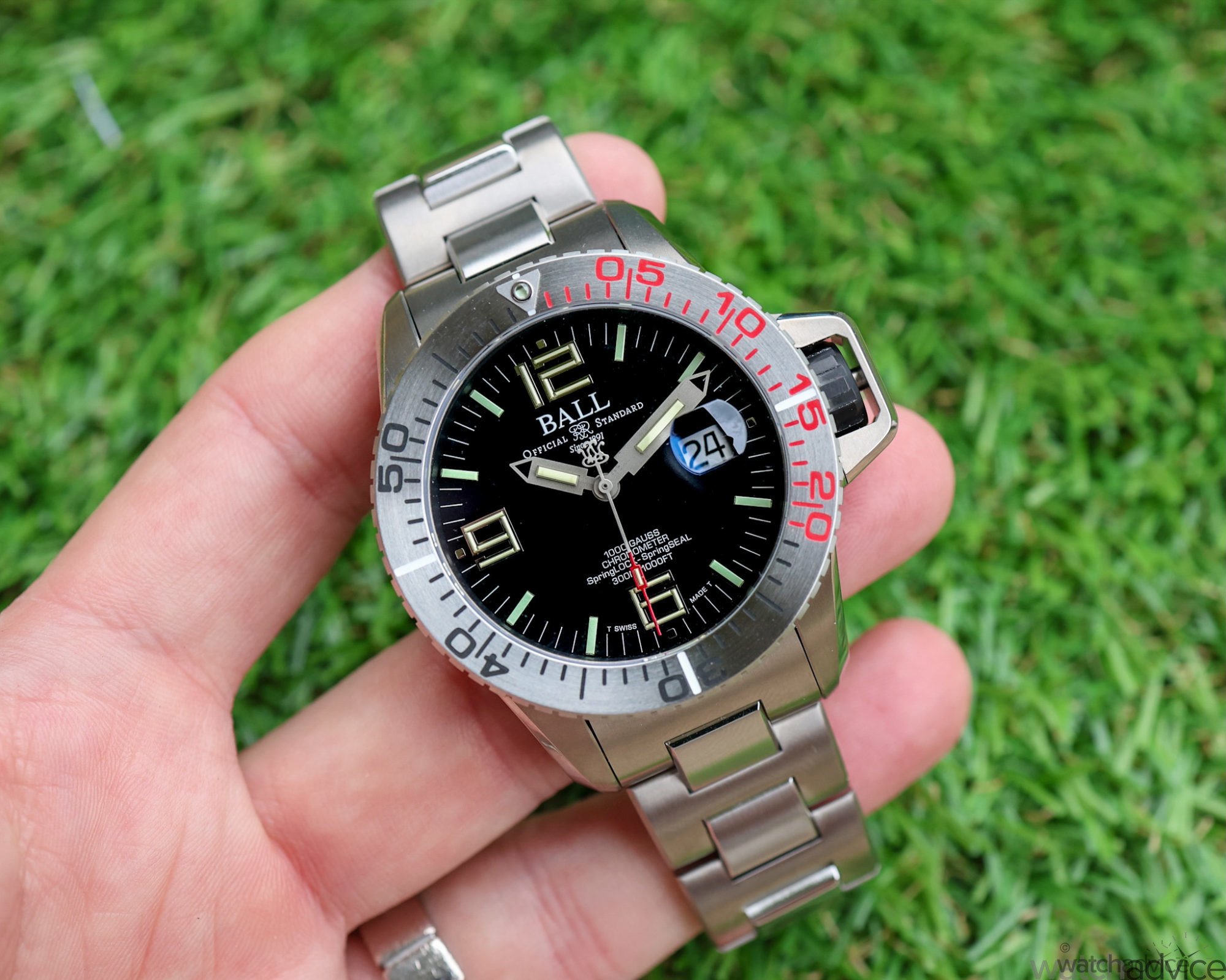
It is on the larger side and wears somewhat larger than the 42mm diameter and 13.7mm thickness would indicate. This is probably down to the lug-to-lug measurement, which I’ll get into shortly. But on the wrist it did feel fine and due to the lightness, again, something I’ll touch on in due course. Now, at this point, I was looking forward to seeing how it felt after a longer wear and revisiting my initial thoughts in a week or so…
The Design
According to Ball, the Engineer Hydrocarbon EOD (Explosive Ordinance Disposal) is the world’s most shock-resistant watch. Makes sense as this is a piece that is designed for the US Navy’s Explosive Ordinance Disposal teams. Or in simple terms, divers who disarm underwater explosives. So this in essence is an ultra-tough dive watch, and the design does scream this.
The case is made from Titanium which has been given both brushed and polished treatments, making it light and durable. The bracelet is also made from the same brushed and polished titanium to keep the overall aesthetic clean and uniform. Ball however does mix this with both a stainless steel bezel and on the bracelet, the clasp is also stainless steel, both of which give the watch that little bit of extra weight I spoke about earlier.
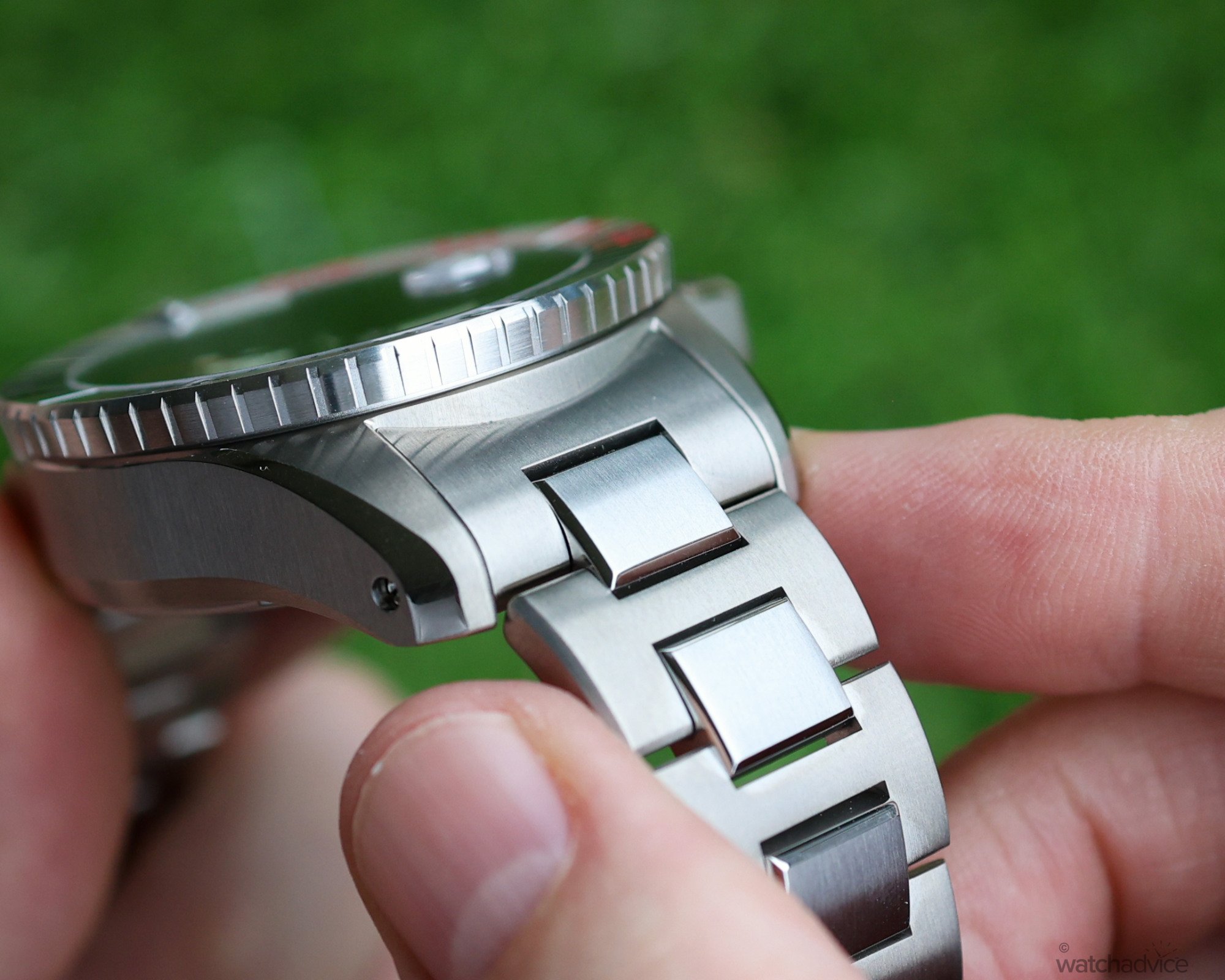
One feature that needs to be highlighted here is the shock absorption of the watch. This is a piece that can be dropped onto solid ground from 10 meters and be perfectly fine. The shock resistance of the Engineer Hydrocarbon is rated to 1,400 Nm of force, and according to Ball, “A seemingly supernatural heavyweight of 50,000Gs shock resistance and strength”. This is actually impressive, and I’ll go into more detail further in the article.
An additional shock-resistant feature of the Engineer Hydrocarbon’s ability to withstand this level of force is through the crown guard system. At first, you may think this is a mechanism like Panerai’s crown protection device, which you’d be fine with thinking as this was my first thought. However, it acts very differently, which I’ll try to explain.
The crown is a pushdown crown, but with a screw-in protector, essentially making the crown a screw-in. The protector acts as the mechanism to do this via a sealed screw thread just under the crown itself. The black screw locks onto the thread and pushes the crown fully in whilst being watertight. This ensures the crown is fully protected, and the way the crown and crown stem is designed allows for energy escapement in the instances of large shocks, as well as the protector itself helping to absorb shocks to the case.
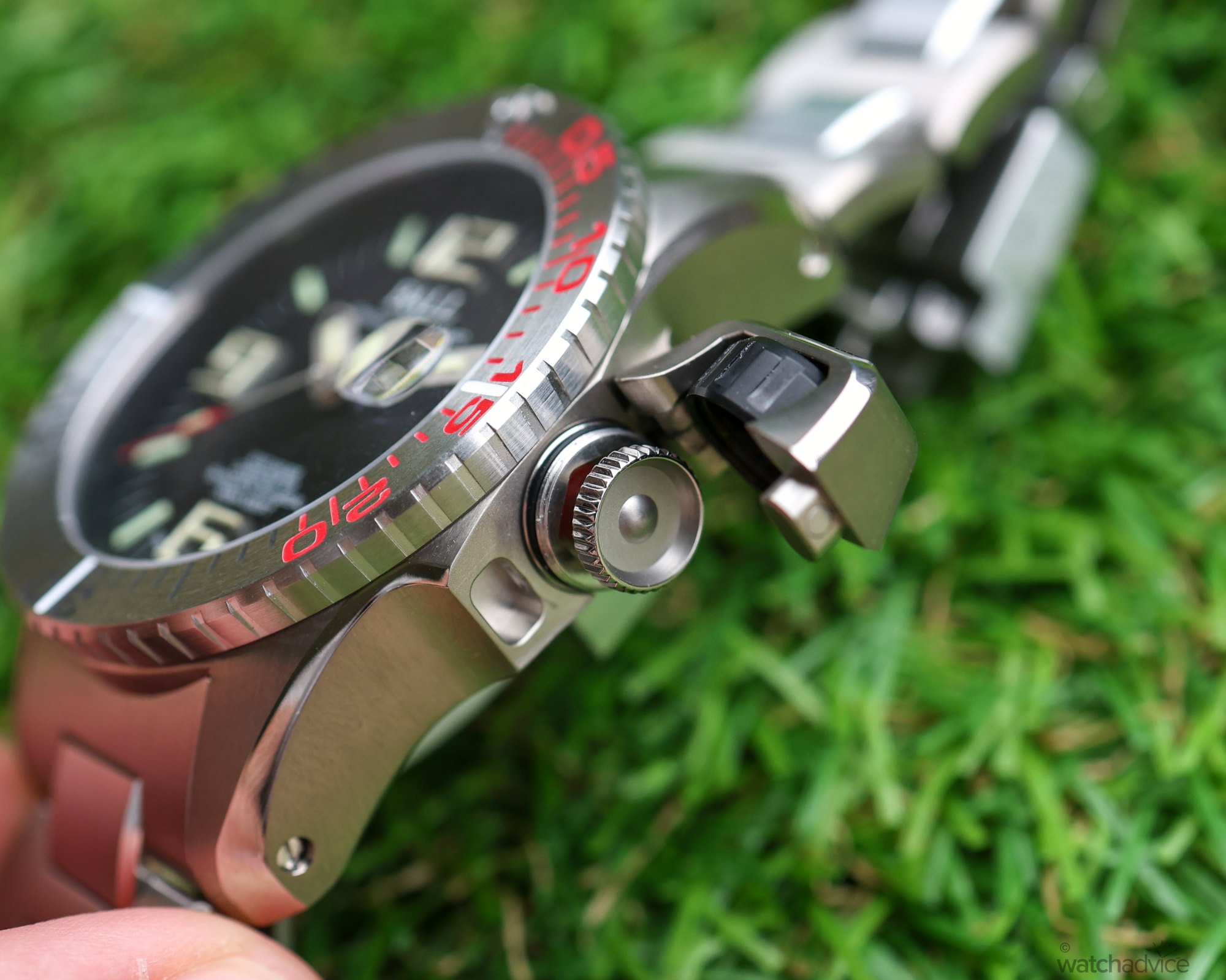
Reading up on this and playing around with the crown as well, you start to appreciate it for the design and just how different this is to Panerai’s system which is essentially a pushdown crown being stopped by the protector lever and protector.
Typical to Ball, the Engineer Hydrocarbon uses the 1mm micro gas tubes rather than SuperLuminova to ensure it stays lit all night. Again, the last thing you want when you’re disarming an explosive device underwater at night is to not be able to see the time to coordinate missions or for use in the disarming of an explosive device itself. But, if; you’re not doing this, then it is quite handy to be able to glance at the watch and see the time shining brightly without any ambiguity at all.
Testing this, it works well and the micro gas tubes keep the dial lit up like New Year’s Eve. Again, being a tool watch, this piece is all about utility and legibility is key for any piece that is designed to be used in the field.
How It Wears
In a nutshell – surprisingly well. As mentioned previously, the dimensions vs how it appears vs how it wears don’t add up. Well on paper anyway. Being 42mm and 13.7mm thick, it’s not a huge watch, but the lug-to-lug of 52mm flares out when you take into account the bracelet and end link that extends beyond the lugs. It makes the Lug-to-lug effectively 57mm, so the watch appears to wear larger than the stats suggest.
However, when you put the Engineer Hydrocarbon on the wrist, the watch hugs the wrist due to the flat caseback and the rounded lugs and angled down end links. Adding to this, the lightness of the watch thanks to the titanium case and bracelet means that there is less weight in the case to bring it off balance on the wrist. Paradoxically, as it’s not a full titanium piece, there is enough weight to feel like you have something on your wrist – something that is always hard to get your head around with a full titanium watch initially.
The bracelet is solid too, thanks to the mix of Titanium and steel. The double-folding butterfly clasp is on the thicker side due to the design. The double push buttons did rub on my wrist a little while wearing it, so that is one thing to look out for on the Engineer Hydrocarbon if you are looking to buy it. But on the plus side, this gives the watch a little more balance on the wrist thanks to the titanium outer and steel inner clasp, so it’s a small trade-off depending on your wrist shape and size.
The crown guard adds to the larger appearance of the Engineer Hydrocarbon, adding another 6-7mm to the watch’s diameter when you take this into account. If fitted properly, this shouldn’t prove much of an issue, and I didn’t find it bothered me at all.
Speaking of fit, the Ball Engineer Hydrocarbon has both full and half links in the bracelet, meaning that getting a better fit is easier with the removable half links. Sizing can sometimes be an issue with bracelets especially if you have a wrist like mine which fluctuates and it is sometimes hard to get the right fit when a bracelet has just full links. It does have the addition of 2 micro adjust holes in each side of the clasp to help with this as well.
The Movement
I touched on this earlier – the Engineer Hydrocarbon is insanely shock-resistant. Ball achieves this in two ways. The Engineer Hydrocarbon has what’s called a patented elastomer ring that surrounds the dial and mechanical movement, and in doing so, allows the caliber crown stem, spring, and dial to move slightly while absorbing impacts. Kind of like a suspension system of sorts. It both absorbs and releases energy as well as protecting the internal components via its internal padding.
On top of this, Ball as two additional safeguards to protect the mechanism. In Ball’s words: “Covering the balance spring, our SpringLOCK® limits the unfurling of the coils and prevents twisting in the event of a harsh impact. On the reverse side, our SpringSEAL® safeguards the regulator assembly and ensures it does not change position upon heavy force, eliminating additional service adjustment.”
Rather than me trying my hand at digital rendering and CAD, I’ll let the video below showcase this properly…
All this technology helps to protect the Automatic caliber BALL RR1101-CSL, which is a self-winding automatic movement that is Chronometer Certified via the COSC. Over the course of the week, I found that the watch kept good time and well within COSC tolerances, and ran about +3 seconds per day. The base reference of the RR1101-CSL is an ETA 2892-A2, pivoting on 21 jewels, beating at 4hz (28,800 VpH), and has a respectable, but not ground-breaking 42-hour power reserve.
It’s a solid movement and does the job perfectly in the Engineer Hydrocarbon, this and not to mention Ball has heavily modified this movement and incorporated the SpringLOCK® and SpringSEAL® safeguards, which is one of the selling points of the watch in my mind.
Final Thoughts
After having the Ball Engineer Hydrocarbon on my wrist for a week, and re-visiting my first impressions, I feel that I understand the watch much more, and delving into both the history of Ball, its intended purpose, and the nuances of the watch itself, it makes sense. This is a piece that is designed for a purpose, and for people who need a reliable, robust (dare I say bulletproof) watch that won’t let them down. As Ball says, “Accuracy Under Adverse Conditions”. And if being an underwater explosive disposal expert isn’t working in adverse conditions, then I don’t know what is. Kids party on a weekend? Maybe not but it will handle that fine.
The Ball Engineer Hydrocarbon EOD is a watch that also makes you feel like you should get out and do something adventurous. Outside of Navy Divers, it’s a piece that you should consider if you love the outdoors, adventure sports, hiking, and camping etc, etc. It’s lightweight without being too light, it’s solid and shock resistant and keeps the time well. Not only this, at night it won’t let you down either with those micro gas tubes glowing all night. Will it win a beauty award? Probably not. Will it serve you well when you need it? Most definitely. And for under A$6,000, it’s decent value for money when you consider the watch and internal shock-resistant technology you’re getting, which is really the point of difference of the Ball Engineer Hydrocarbon EOD!
Reference: DM3200A-S1C-BK
Specifications
- Size: 42mm, 13.7mm thick and 52mm lug-to-lug (57mm inc bracelet end links)
- Case: Brushed and polished Titanium with uni-directional rotating stainless steel bezel with gas tube inset with special screwed-in crown protection cap
- Dial: Black dial with 28 micro gas tubes on bezel, hour, minute, second hand and dial for night reading capability
- Crystal: Anti-Reflective Sapphire Crystal
- Movement: Automatic caliber BALL RR1101-CSL. COSC certified pivoting on 21 jewels and beating at 4hz / 28,800 Vph with shock resistant capaibilities to withstand a 10-meter free fall (50,000Gs)
- Power Reserve: 42hrs
- Water Resistance: 300m / 30ATM
- Bracelet: Brushed Titanium and stainless steel bracelet with patented folding buckle with extension


